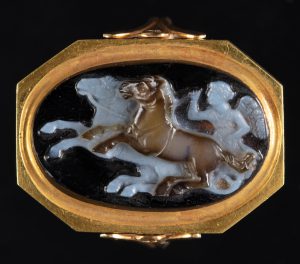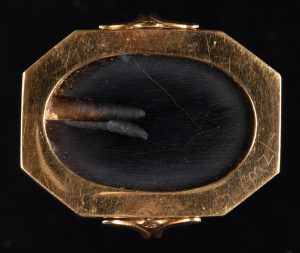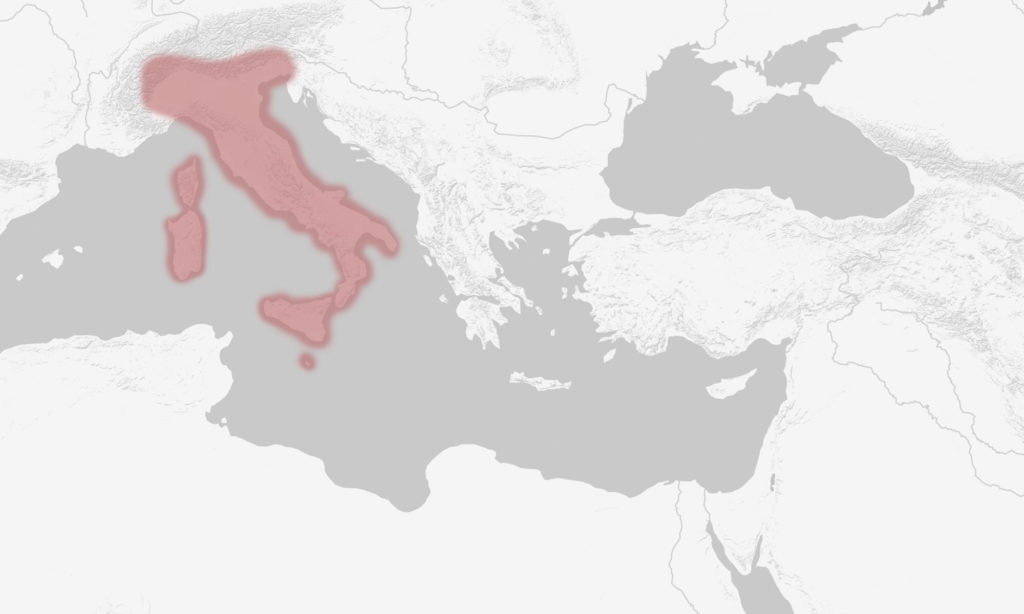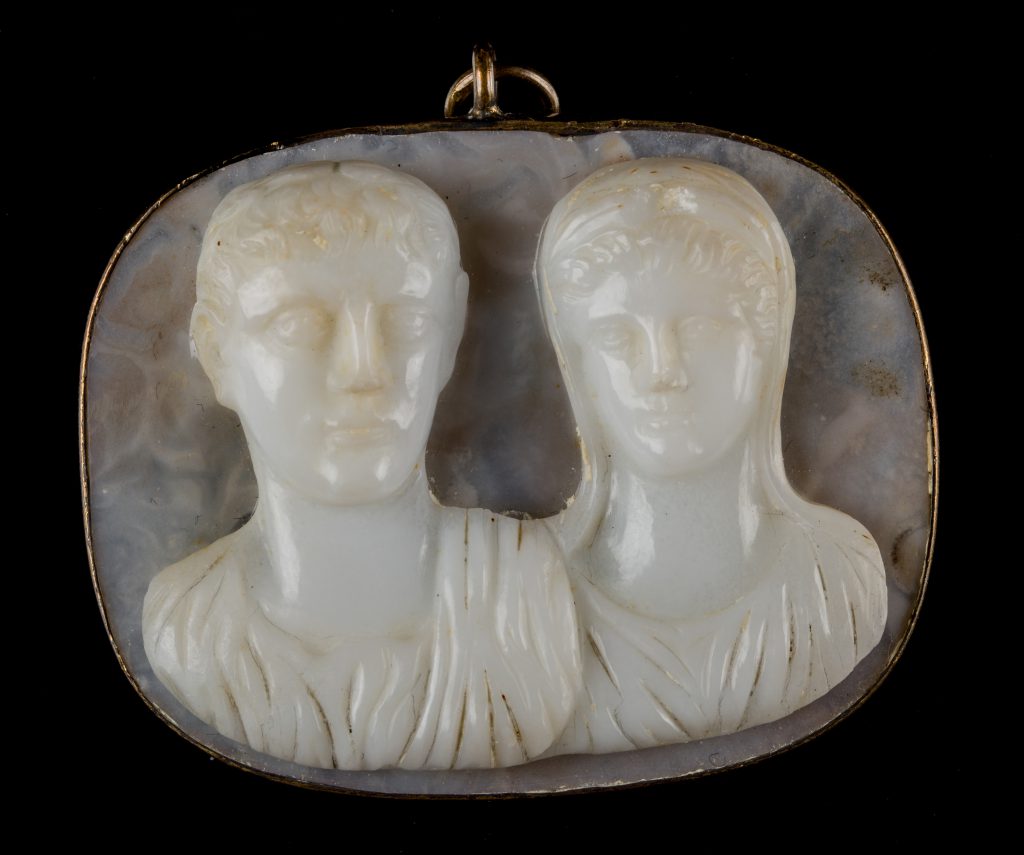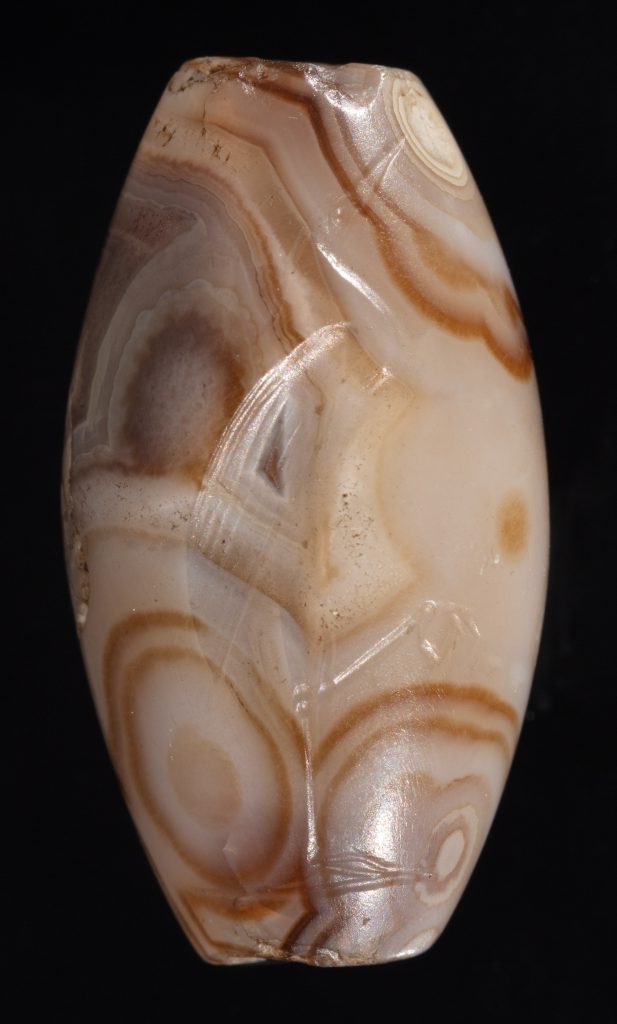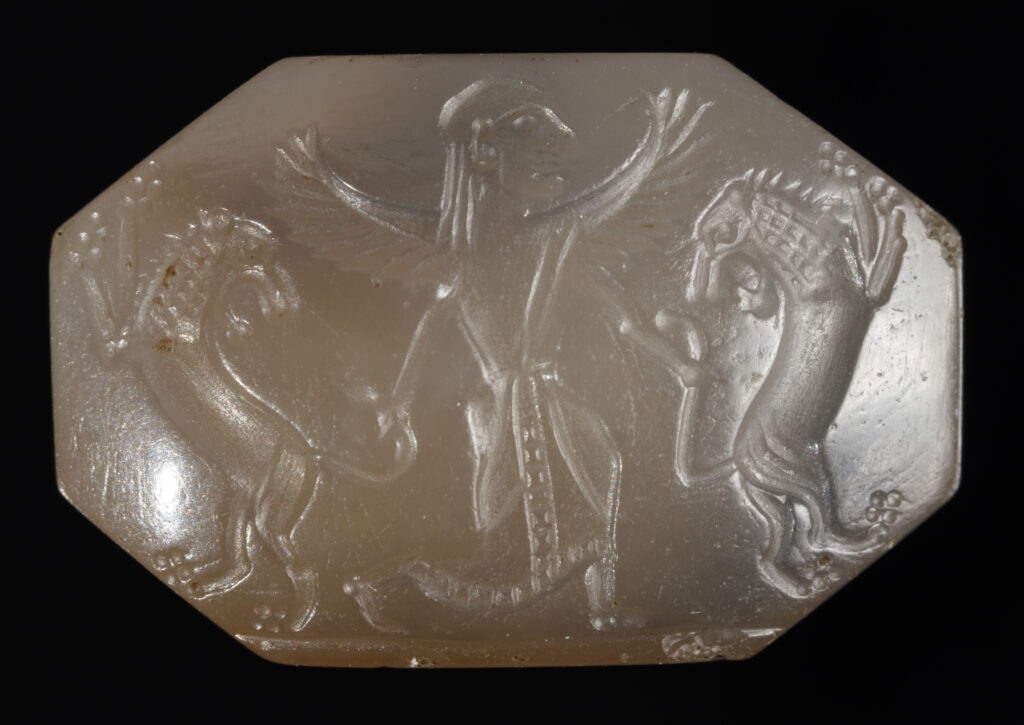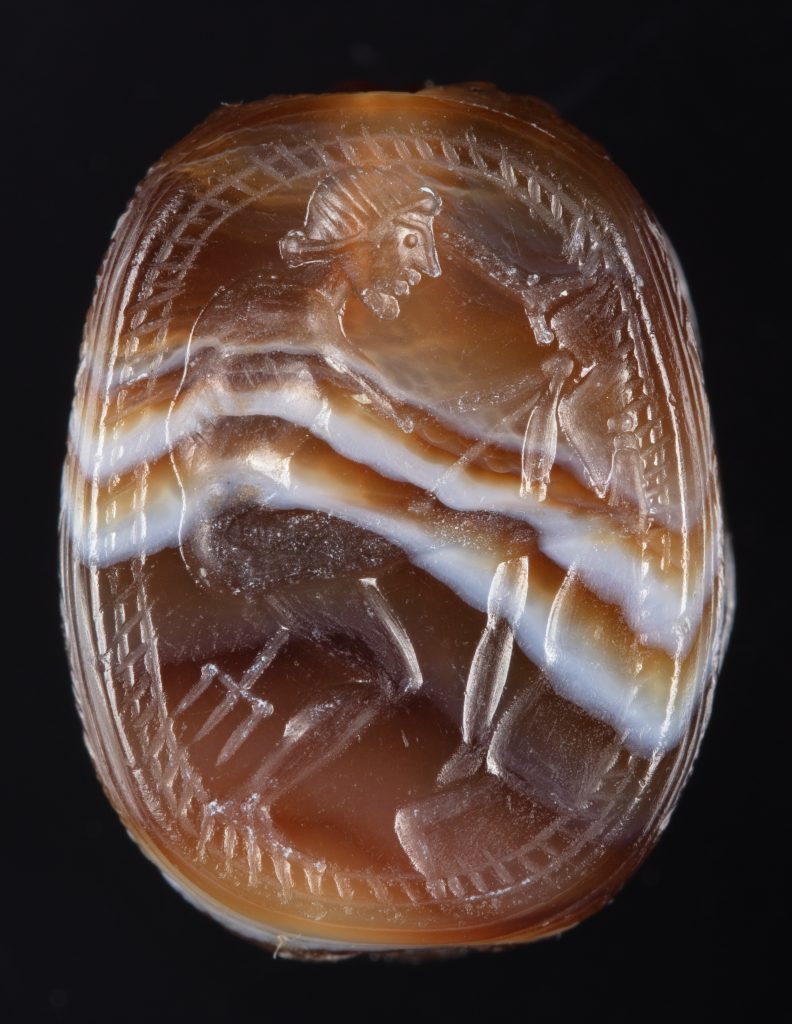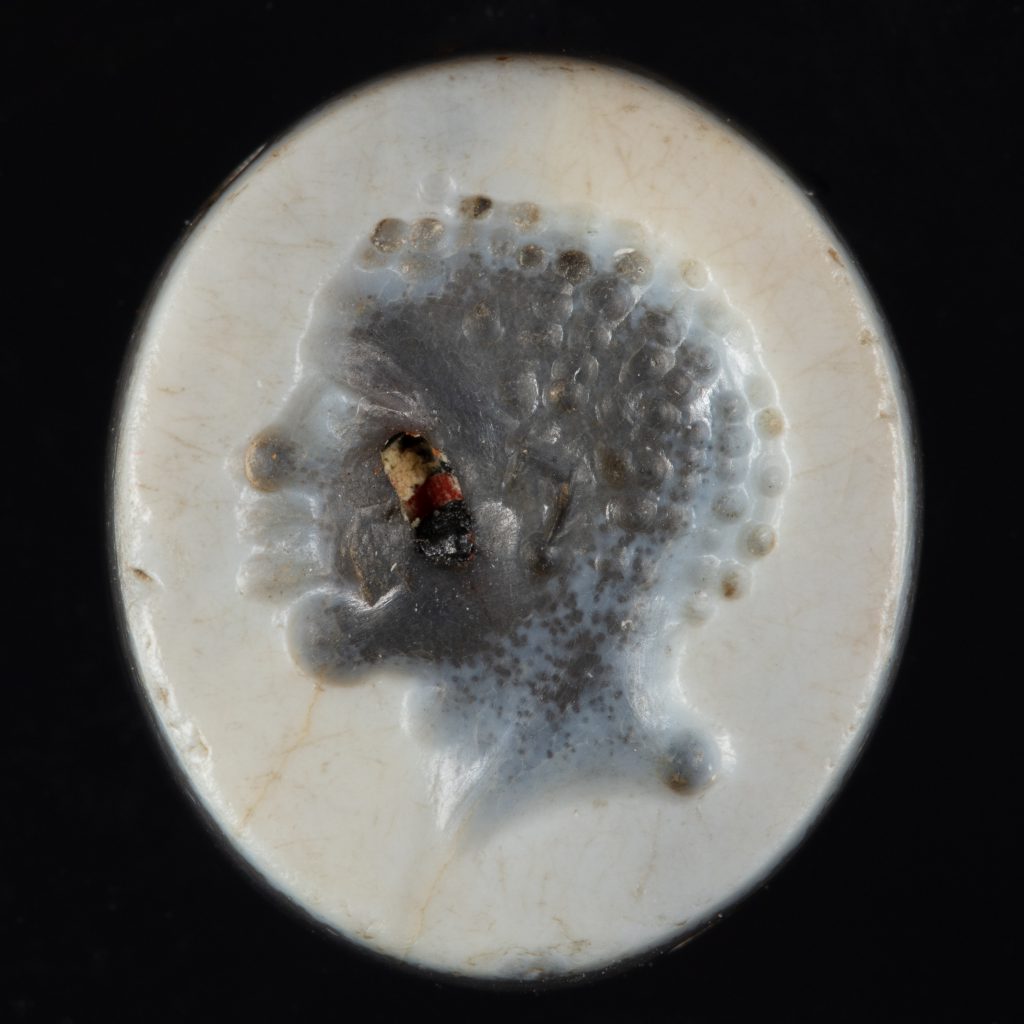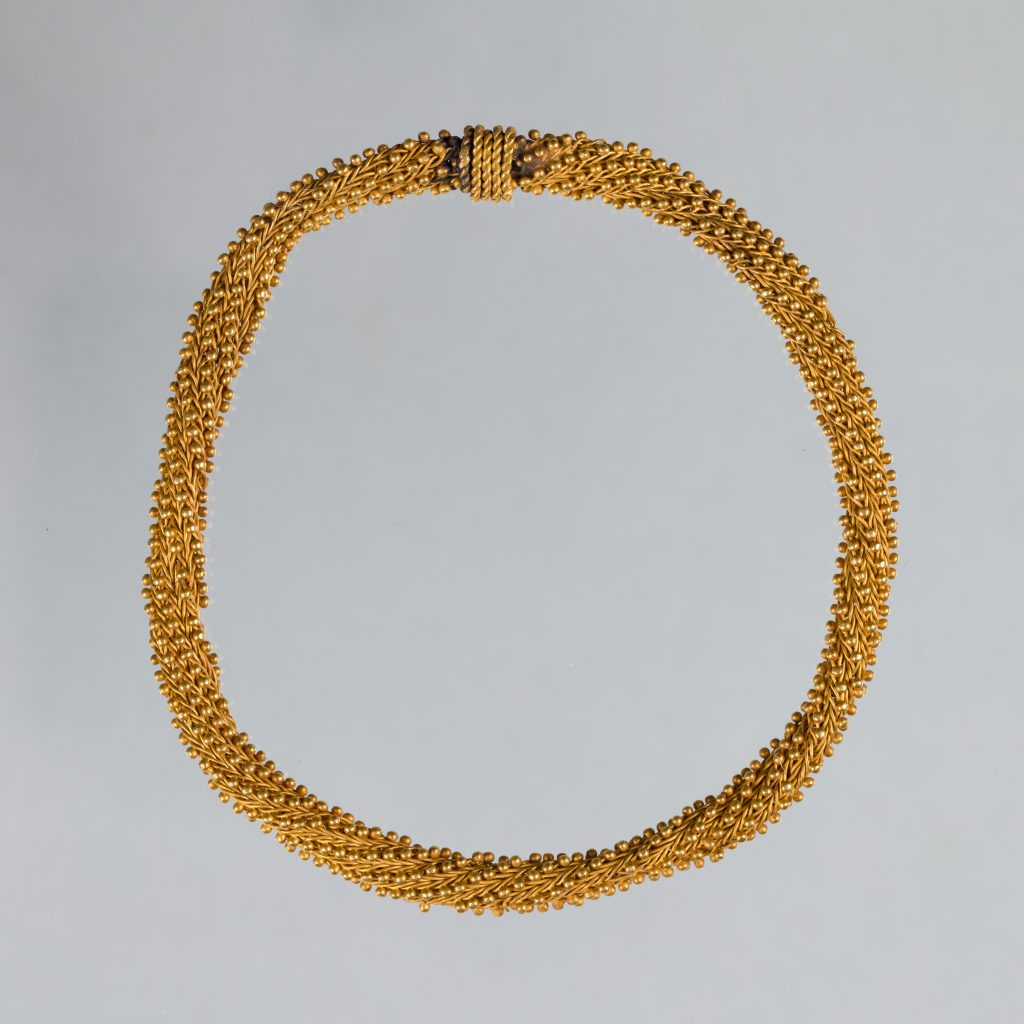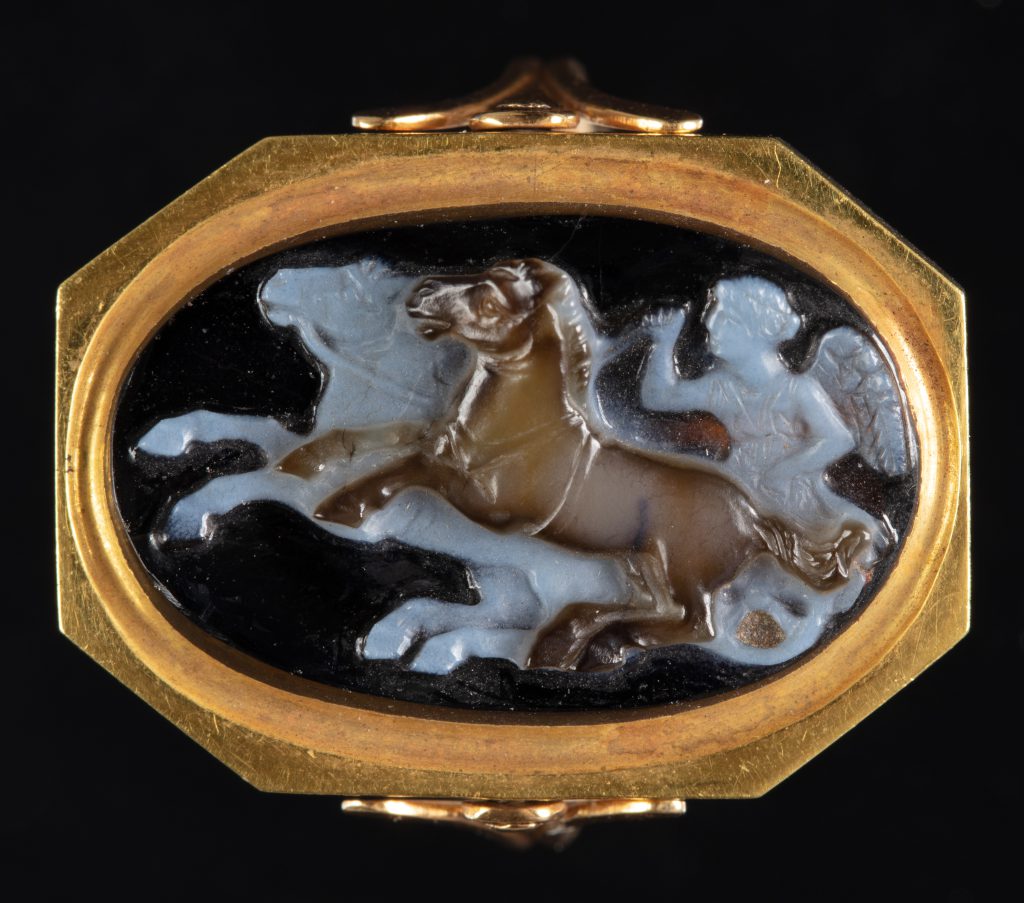

Gift of Edward Perry Warren, Esq., Honorary Degree 1926
1915.86This cameo, carved from onyx and refashioned in a modern setting, illustrates the winged Nike, goddess of victory, seated in a chariot pulled by two horses, referred to as a biga. The biga was commonly ridden during athletic games and ceremonial processions. The artistic process of carving a cameo requires an exceptional degree of knowledge, skill, and planning, as the onyx consists of differently colored layers of stone.
The background of this cameo is a deep, dark brown, the middle layer is a blue-white, and the foreground is a lighter, more translucent brown. To achieve this painterly effect rendering Nike and the biga in different colors, the artist had to carve one layer at a time, beginning with the outermost brown horse, before cutting deeper to the next bluish white color to illustrate Nike, the chariot, and the second horse. Cameos carried connotations of wealth given the time-consuming and artistically demanding nature of their creation. As such, cameos were often set into rings and pendants that functioned as public-facing framing devices. Warren’s many donations of gems and cameos underscore his interest in luxury items and the leisure culture of the ancient Mediterranean world.
Before 1915, collection of Edward Perry Warren; 1915, gifted to the Bowdoin College Museum of Art by Edward Perry Warren.
Collector
A testament to his impact as an influential twentieth-century American antiquities collector, Edward Perry Warren’s (1860–1928, H ’26) name is linked to hundreds of ancient objects housed in institutions across the United States, including more than five hundred works at the Bowdoin College Museum of Art alone.
